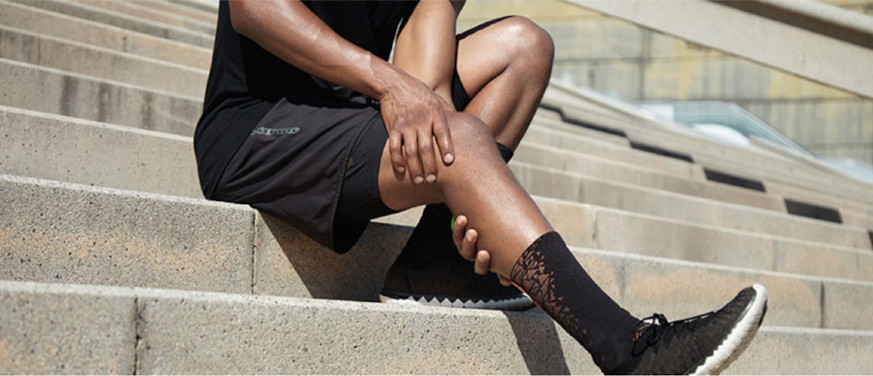Running News Daily
Running News Daily is edited by Bob Anderson. Send your news items to bob@mybestruns.com Advertising opportunities available. Train the Kenyan Way at KATA Kenya and Portugal owned and operated by Bob Anderson. Be sure to catch our movie A Long Run the movie KATA Running Camps and KATA Potato Farms - 31 now open in Kenya! https://kata.ke/
Index to Daily Posts · Sign Up For Updates · Run The World Feed
Are you experiencing a COVID-related injury?
For many of us, the COVID-19 pandemic has changed our daily routines dramatically. Instead of heading into the office, we’re working from home. Rather than running with friends, we’re logging all our miles solo. Without gyms to go to, we’re trying to work out in our houses and apartments. These lifestyle changes are starting to show up in our bodies, and physiotherapists are beginning to see these changes reflected in the types of injuries showing up in their clinics. We spoke with Lindsay Scott, runner and physiotherapist at the Runner’s Academy in Toronto, to find out what types of COVID-related injuries runners are experiencing, and what they should do to avoid them.
Scott explains that many of us are spending hours huddling over computers, working from couches or beds and losing the small amounts of daily movement that come with leaving the house. Coupled with a sudden change in access to gym facilities, these lifestyle changes initially caused things like headaches, neck and jaw pain and lower back pain.


She says they’re now seeing two trends: beginner runners or those who have increased their mileage significantly, and runners who are just simply burnt out. Runners in the first group have increased the demand on their bodies faster than they can adapt, and this is leading to an increase in complaints like shin splints and patella-femoral pain syndrome (runner’s knee)
For runners in the second group, burnout can translate into all kinds of injuries, including bone stress injuries, pain in the SI joint area, plantar fasciitis, Achilles issues and the return of previous injuries. Scott says one reason for this is because stress of all kinds can increase our risk for injury.
“Any stress, whether it’s physical, mental or emotional, will play into our resilience on therun,” she says.
Additionally, she says that without any races on the calendar this past year, many runners didn’t take any downtime or plan to have a recovery season the way they would after a race. It is not possible to be at peak fitness all year, and it isn’t sustainable to continue to train without taking a period of intentional rest. The issue, of course, is that many of us use running as a way to relieve stress, and so taking time off during such a difficult time doesn’t seem all that appealing.
"As we use running as a coping strategy, an anchor in our daily routine, and a reason to leave the house for some fresh air, we’re seeing the effects of insufficient recovery in the form of more injuries,” Scott says
Scott uses the visual of a hurricane to explain the factors that contribute to injury: at any given time, you have a number of factors swirling around that are contributing to your health (like good technique, good coping mechanisms and a supportive environment) and factors swirling around that are detracting from it (like poor mobility, stress, fatigue or unhealthy ideas about training). Every day, the pull of a given factor may be more or less than the previous day.
“In the event that the factors that drive you towards injury begin to outweigh the healthy factors, you move closer and closer to a tipping point, at which point, you begin to experience symptoms,” she explains. “So while it may seem as though something as simple as neglecting your post-run routine after that last workout created symptoms, the reality is that you had likely been building towards that tipping point and that one change was simply the final straw.
If you’re experiencing pain that lasts more than a few runs, or that seems to be getting worse, Scott recommends seeking out a physiotherapist or other healthcare professional, particularly one who has experience with runners. Even during the lockdown, many healthcare practitioners have been deemed essential and remain open to support runners. She adds that virtual care is also an excellent option for those who can’t or don’t feel comfortable with an in-person appointment, and can still produce similar results as face-to-face care
Scott’s guidelines for running during COVID-19
First, Scott advises runners to adjust their expectations around running based on the positive and negative factors that contribute to their ability to tolerate the demands of running. If your stress levels are rising and you feel the need to head out for a run, first check to make sure that it is the right thing for your body. Second, she reminds runners to give their bodies plenty of time to recover and to build up mileage and intensity gradually.
Scott also advises runners to think about what it looks and feels like when they’re running through fatigue, and to be aware of those signs of overtraining and burnout. You should also keep up with a regular mobility practice and strength training program to keep your body moving well. She says this is also useful as an early indicator if something isn’t moving well long before symptoms develop.
Finally, if you’re someone who tends to get competitive with others or yourself, Scott suggests muting or turning off tools like Strava or the ‘productivity’ feature on your Garmin
“Clinically, I see many runners who ignore warning signs from their body in order to keep up with these often arbitrary indicators of success on the run. Both of those tools can have immense value to runners in certain circumstances, but they can also push you to enter dangerous territory if you lose sight of the need to listen to your body.”
During already stressful times, the last thing you want is to add an additional stressor into your life in the form of an injury. Listening to your body, backing off the volume or intensity when necessary and taking a few days off if you need them will ensure that running can continue to add something positive into your daily life
by Running Magazine
Login to leave a comment




